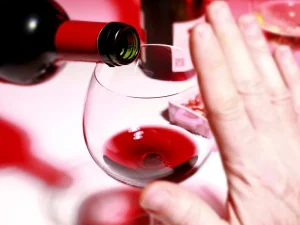Currently Empty: 0,00 د.إ

Learning and practicing these skills can build resilience and enhance your overall well-being. I, _______________________, commit to using this relapse prevention plan relapse prevention plan to support my recovery journey. I understand that recovery is a process, not a destination, and I am committed to doing the work necessary to maintain my sobriety.

Follow a model

Study results showed that 40% to 60% of recovering addicts suffer from it at least once, whereas worsening occurs in 50% to 70% of people with health conditions such as hypertension and asthma. A relapse is when an individual returns to drinking after a period of abstinence. They provide emotional support, accountability, and practical assistance. Several forms of therapy have been widely used to help individuals struggling with addiction.
Treatment
Plus, we’re always introducing new features to optimize your in-app experience. We recently launched our in-app chatbot, Melody, powered by the world’s most powerful AI technology. Melody is here to help as you adjust to a life with less (or no) alcohol. You’ll meet hundreds of fellow Reframers in our 24/7 Forum chat and daily Zoom check-in meetings. Receive encouragement from people worldwide who know exactly what you’re going through! You’ll also have the opportunity to connect with our licensed Reframe coaches for more personalized guidance.
- A relapse prevention plan can help you identify triggers, develop coping skills, and understand who is ready to help you in a crisis.
- Positive coping skills include attending support groups, exercising, journaling, and eating healthy foods to minimize intense cravings.
- 5) People think that they have a better understanding of drugs and alcohol and, therefore, think they should be able to control a relapse or avoid the negative consequences.
– List three achievable, measurable recovery goals.
- Self-efficacy refers to a person’s confidence in their own ability to achieve something.
- Think about some positive activities to help when stressors or triggers get you down.
- The relapse prevention model promotes lifestyle changes, encouraging a holistic approach to recovery.
- If red flags can be spotted early on, the patient can roll out mitigating measures to stop progression to recidivism as soon as possible.
Dealing with post-acute withdrawal is one of the tasks of the abstinence stage 1. Post-acute withdrawal begins shortly after the acute phase of withdrawal and is a common cause of relapse 17. Unlike acute withdrawal, which has mostly physical symptoms, post-acute withdrawal syndrome (PAWS) has mostly psychological and emotional symptoms. Its symptoms also tend to be similar for most addictions, unlike acute withdrawal, which tends to have specific symptoms for each addiction 1. As individuals go deeper into mental relapse, their cognitive resistance to relapse diminishes and their need for escape increases.

Develop a Self-Care Routine
A relapse prevention plan is simply a plan for how you canprevent a relapse or a return to drug use after a period of abstinence. Arelapse prevention plan can be a simple plan that is a couple of pages long or adetailed plan for making changes to all the areas of your life that have beendamaged by drug use. Relapse Prevention is considered among the most important clinical innovations in the substance use disorder treatment and recovery field, and continues to be one of the most widely practiced. When clinicians and scientists refer generally to CBT for substance use disorder, it is often Marlatt’s RP model or some related approach to which they are referring.

Providers need to emphasize that occasional thoughts of using or cravings are a common part of recovery so they can help the patient equip themselves with the skills needed to work through these challenges. Your plan should include what you will do if you have a craving.Think about people you can call if you feel like using, safe places you can goand what will comfort you and calm a craving. The Relapse Prevention Plan worksheet provides a bare-bones structure for creating such a plan. This resource will ask your client to identify red flags warning them that they’re near relapse, people they can call during cravings, and things they can do to take their mind off using. Because of this worksheets open-ended nature, we suggest using it as a prompt for conversation in groups.

